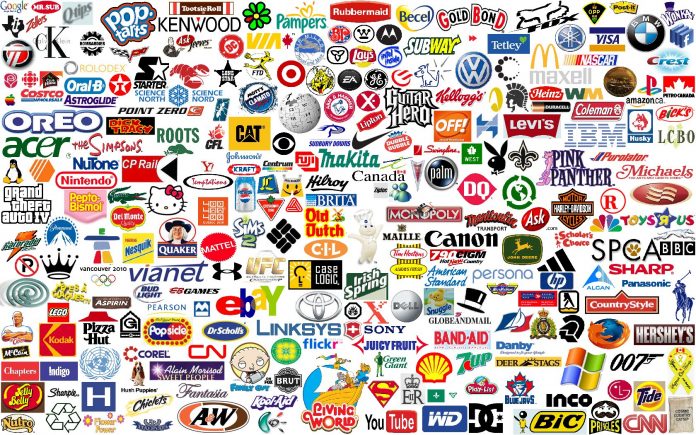LAHORE: In one way or another, our lives revolve around brands. Brands that create some of the most sought-after products, use some of the most sophisticated technologies and come up with emotional marketing campaigns which reduce us to tears – pure genius.
In a report by Brand Finance, in its evaluation of the top 500 global brands, we can see what makes each brand create its magic.
Overall, brands are categorised by these sectors:
- Technology
- Banks
- Telecoms
- Retail
- Automobiles
- Oil & Gas
- Others
The way that technology has exponentially grown and spread like wildfire around the world, it is plain to see and understand how it is the most valuable sector with a collective brand value of $1350.6 billion, taking in a total percentage of 23 per cent in the brand value pie with all the other sectors fighting for their place.
Understanding Brand Value
Brand value essentially includes a brand’s contribution, business value, and enterprise value. Brand value is the raw power and strength of the brand’s trademark and associated marketing intellectual property (IP) within the branded business.
The top 10 most valuable brands in the world are:
- Amazon
- Apple Inc
- Samsung
- AT&T
- Microsoft
- Verizon
- Walmart
- ICBC
What is the common denominator among these brands? You guessed it. Technology. If you didn’t, you need to get out of your closet and look at how you are connected with the world through your phone, laptop, tablet, computer, television, smartwatch, car, or even your home security system.
Gone are the days when consumer goods brands such as Coca-Cola, Nestle, PepsiCo, Unilever, and Proctor & Gamble ruled the global charts and rankings. For example, according to a Foreign Policy report, the cash that Apple has on-hand exceeds the GDPs of two-thirds of the world’s countries. This makes Apple, monetarily, more powerful than two-thirds of the world’s countries. Imagine.
For the first time, technology brands claim all top 5 places in the league table. Samsung (4, $92.3 billion) and Facebook (5, $89.7 billion) both recorded impressive year-on-year brand value growth of 39 per cent and 45 per cent respectively, overtaking AT&T (6), $82.4 billion).
Change at the top is reflective of a wider global trend as the technology sector accounts for more than twice as much brand value as telecoms. The dominance of digital is set to grow even more in the coming years as other brands make their way up the Global 500.
Google-owned YouTube more than doubled its brand value to $25.9 billion, jumping 70 places to 42nd. Chinese technology brands, taking advantage of captive market conditions, can also boast high brand value growth, with Alibaba (12), Tencent (21), WeChat (49), Baidu (57), JD.com (65), and NetEase (121), going up by an average of 67 per cent year on year.
Digital Dominance and Roadmap
Of course, brands going directly to consumers isn’t a new idea. Nike, Disney and Apple are all brands that have combined traditional sales and distribution channels with direct-to-consumer channels such as self-branded stores and eCommerce websites.
However, the approach taken by these well-known brands can require tremendous investments in their own online stores, retail chains and staff. Today’s digital tools and platforms can enable brands to develop their own direct-to-consumer channels far more quickly and cost-effectively.
Social media tools, such as Facebook, Twitter, Instagram, and Snapchat have transformed the way that customers and brands interact with one another. Low-cost analytics tools are allowing companies to understand customers better than ever before.
For brands, according to a report by consulting powerhouse, Deloitte, these digital tools provide a free or low-cost way to connect and engage with the people who buy and use their products. For some established brands, this can be the first time they’ve been able to connect directly with their customers.
Done effectively, social media-driven engagement efforts can help build brand loyalty and drive direct-to-consumer sales. The social influence of individuals can now be measured and valued by their number of friends or followers, how likely their social network is to re-broadcast a message – their reach – and how likely those receiving the message are to convert to customers.
As a result, brands can more readily identify high-value individuals and monetise their social equity through analytics. Brands can also use social media channels to deliver unique products and offers to followers – and in return, gather vital customer data that can be used to better target their sales and marketing efforts going forward.
Regional Outlook
Of the top 500 brands in the world, there is not a single brand hailing from Pakistan. India on the other hand, has several. The United States dominates the list while China comes in the second place, followed by countries in Europe and Scandinavia.
Amongst the 500 of these brands, the United States takes the biggest slice at 43 per cent of the total companies hailing from Uncle Sam’s backyard. China follows at 15 per cent. Germany and Japan with 7 per cent each, France at 5 per cent, and the United Kingdom at 4 per cent. The rest, are grouped together.
What can we learn?
Is it the outbreak of technology, the level of collective IQ, business-friendly climate, focus on STEM education or a general culture to innovate? There is no single factor that contributes to a country’s ability to develop global brands. However, country’s that top the list have all the factors mentioned above plus a healthy economic climate to facilitate the creation of disruptive technologies which can have the power to shape the world.
For Pakistan, the game starts with creating an enabling culture that drives the younger generation to innovate, rather than follow, and be rewarded for the creation of technology that has the capability to find solutions for everyday problems. The friendly IT policies in the last half decade, coupled with a culture of incubation centres in cities shows that there is hope, and we might have on of our own in the list of the top global brands.























